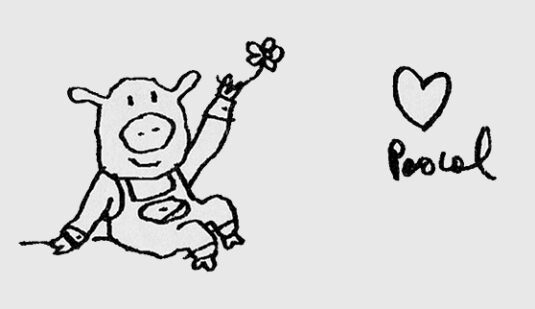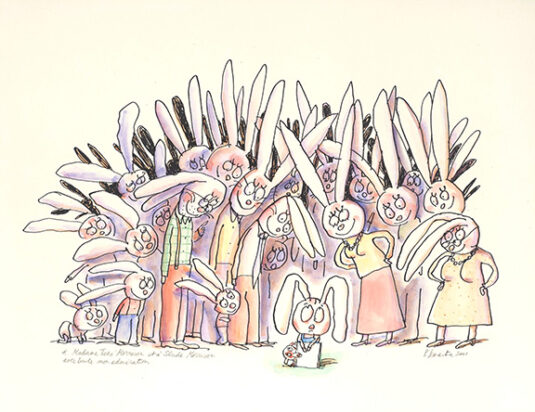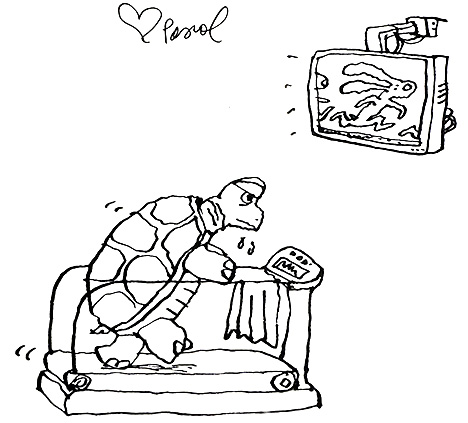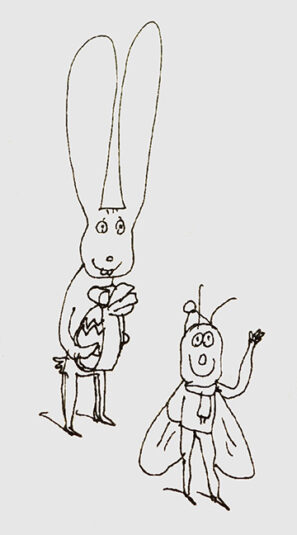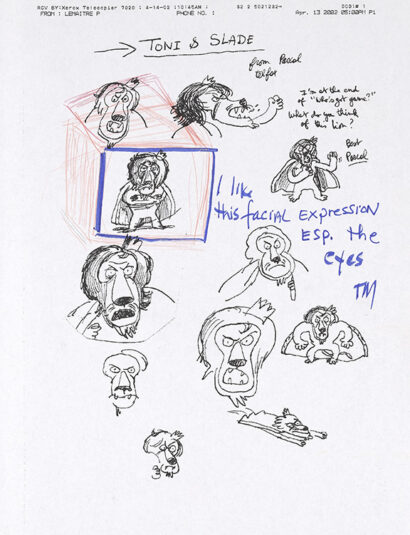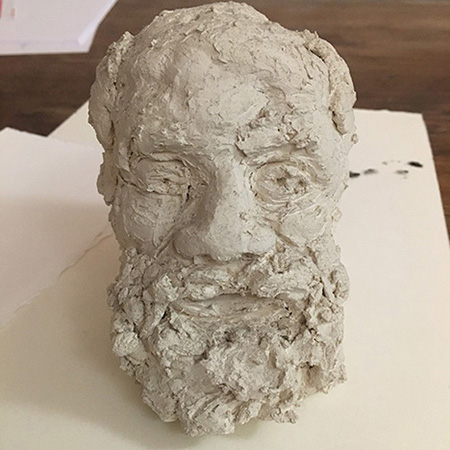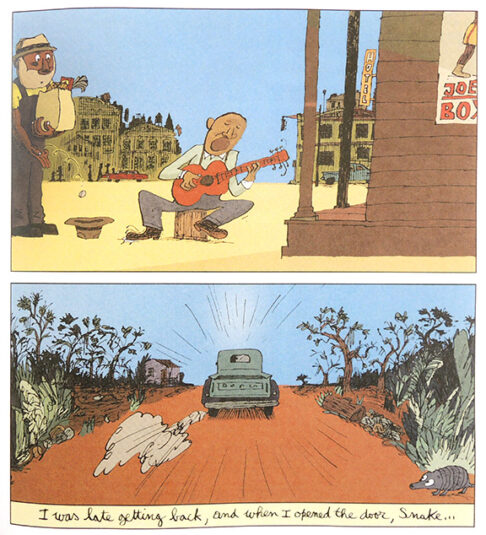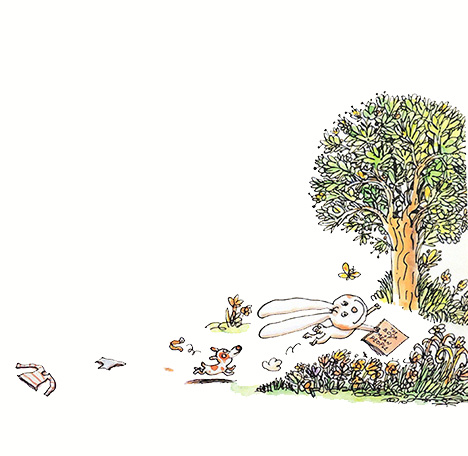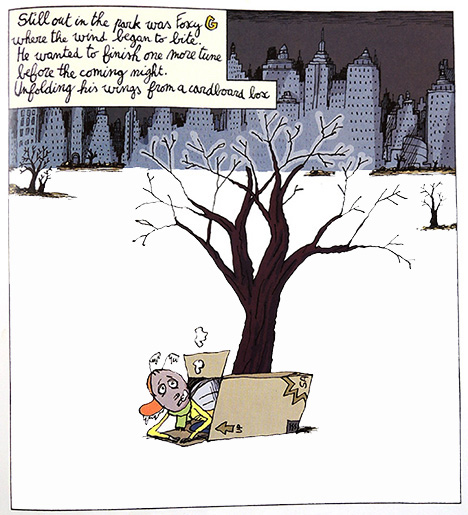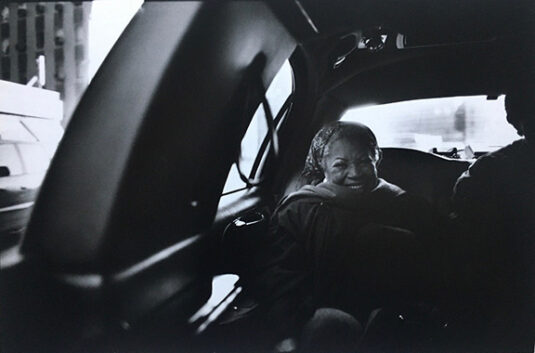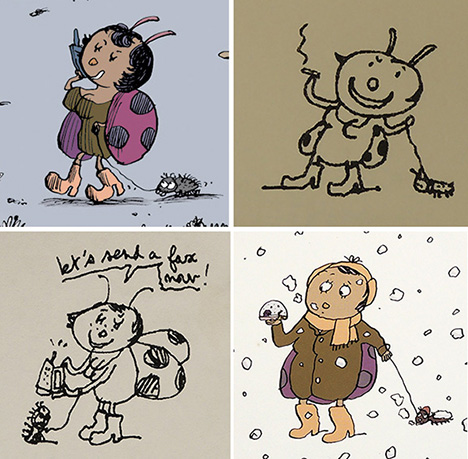
Letter from June Volk to Slade Morrison; Toni Morrison Papers, Manuscripts Division, Department of Special Collections, Princeton University Library.
This is the story of how one teacher’s letter of thanks made its way from a New Jersey classroom to the landmark archives of the Toni Morrison Papers at Princeton University Library. It was discovered during our research for our current exhibit titled “They’ve Got Game: The Children’s Books of Toni & Slade Morrison.”
The author of the letter is June Volk, who at that time was student teaching at Upper Bradford School in Upper Montclair, New Jersey. She reached out to Slade Morrison after her students connected with the books in the Who’s Got Game? book series he co-wrote with his mother. She enclosed letters and drawings from the students, including these hilarious ones from David, both of which are proudly featured in the exhibit:
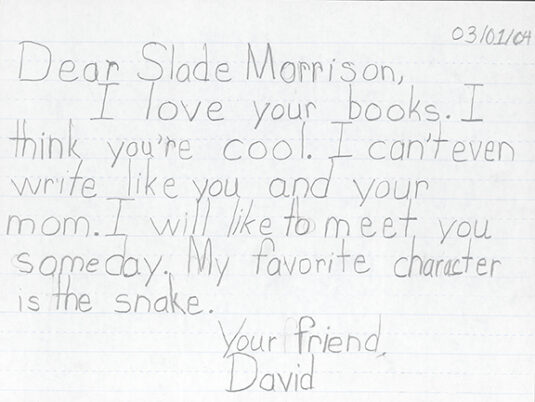
Letter from David to Slade Morrison; Toni Morrison Papers, Manuscripts Division, Department of Special Collections, Princeton University Library.

Original illustration of Poppy and Snake by David; Toni Morrison Papers, Manuscripts Division, Department of Special Collections, Princeton University Library.
Slade sent the letters to Toni, who was delighted. She in turn shared them with her editor, along with this lovely little note:

Note from Toni Morrison to Nan Graham; Toni Morrison Papers, Manuscripts Division, Department of Special Collections, Princeton University Library.
As Katie and I finished the exhibit, we were struck with a thought…was June Volk still in New Jersey? Was she still teaching? Would she be interested to know that her letter from decades ago was in a special place in the Morrison archive?
It took a little searching, but we finally found her! Today, we are delighted to share an interview with this award-winning educator.

Image courtesy of June Volk
Please take us back to 2004, and tell us a little about yourself as a student teacher!
After a career in retailing as a department manager for a major retailer and then as a buyer, I took time off to raise my two children. In the 1980s and 1990s, childcare options were difficult to secure and extremely unreliable for a working mother. To make matters worse, my position required many work hours plus a lot of travel time. I was fortunate to be able to make the choice to stay at home until my children were in middle school, substitute teach, and I decided to pursue a Master of Arts in Teaching at Montclair State University. During the last year of a teaching program, student teachers are placed in classrooms to practice teaching and I was lucky enough to be placed in a Montclair elementary school.
I was assigned to a third-grade classroom as a newly minted student teacher and the memory of that group of students brings a broad smile to my face. Maybe because it was my first real classroom experience or more likely because they were a very bright and engaged group of students, I believe I gained more from these children than they did from me. Teaching mathematics was an easy task for me at the time and perhaps that is why I eventually became a teacher of mathematics. On the other hand, Language Arts lessons were more of a challenge. The children were not engaged or excited with the available and assigned reading materials. I believe it was because the students came from diverse backgrounds, but the stories did not.
After searching booklists and reviews, I discovered the relatively new versions (this was 2004) of Aesop’s Fables by Toni and Slade Morrison. The students were hooked! They begged for read-aloud time and some of them memorized Kid A’s and Foxy G’s lines. The children loved the lyrical rhythm and rhyme of the stories that Toni and Slade created. When I asked them to respond to questions about the theme or the characters, everyone had an opinion, and no one objected to a writing prompt. As their teacher, I learned an important lesson that I retained for my teaching career: well-written, authentic, and relatable reading material was the key to engaging students in reading and writing.
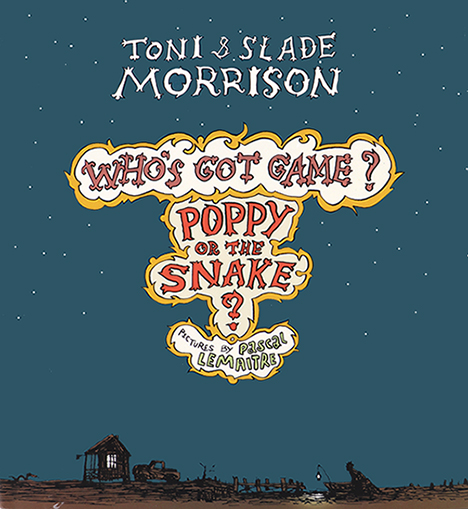
Who’s Got Game? Poppy or the Snake? by Toni & Slade Morrison, illustrations by Pascal Lemaître. Simon & Schuster, 2003.
Can you tell us about your educational journey since then?
I landed my first teaching position in the Livingston Public Schools as a fifth-grade teacher. All teachers taught language arts in their ‘homeroom’ class and then specialized in either mathematics, science, or social studies. Being the new teacher, I was assigned to teach mathematics which I tackled head-on. I eventually earned a degree and certification in mathematics for middle school students. Although I still love teaching language arts, mathematics became my specialty.
I left Livingston after ten magnificent years and moved to Utah where I continued to teach middle school math for several years until my retirement. I now tutor students privately, which became very popular during the pandemic.
The letter you wrote to Slade Morrison was so wonderful. What prompted you to write it?
The students were so attached to the stories and when they saw Slade’s photo on the back jacket of the book, the students thought he looked really ‘cool’ and wanted to contact him.
Were you surprised to hear back from him?
We were very surprised to hear back from him! I never thought he would have the time to respond to our little classroom. Yet he did and the children were thrilled. They loved his signature and tried to copy his cursive!

Letter from Slade Morrison to June Volk. Courtesy of June Volk.
Toni Morrison kept your letter, your students’ artwork, and she even shared everything with her editor at Simon & Schuster. You definitely made an impact are officially immortalized in the Toni Morrison Papers at Princeton University Library. Do you mind sharing how that feels?
I am deeply overwhelmed. As a retired teacher this news brings me full circle. From the moment I decided to become a teacher (I was an older student and in my second career) I really wanted to make a difference for my students. I wanted to connect them to the subject matter in any way possible and get them excited about learning. Those connections are difficult to find now, especially when teachers are competing with mobile phones, online gaming, and lightning-speed technology. The Morrisons’ books were a hook for my students, and I am forever indebted to them for their creation.
Do you have any advice for all the student teachers out there, just starting on their paths?
Get to know your students really well! What excites them? What interests them? How can you as their teacher create lessons from the required curriculum that will fully engage your students? I know it’s not always possible to do this, but if you can create a lesson or two in a unit of study that really gets your students excited about learning it will become contagious in your classroom and they will trust you and follow you in their learning journey.

 It’s always wonderful to see an artist’s finished work, but rarely do you get a chance to see their creative process. Especially when that process includes a correspondence with Toni Morrison! In researching the
It’s always wonderful to see an artist’s finished work, but rarely do you get a chance to see their creative process. Especially when that process includes a correspondence with Toni Morrison! In researching the 